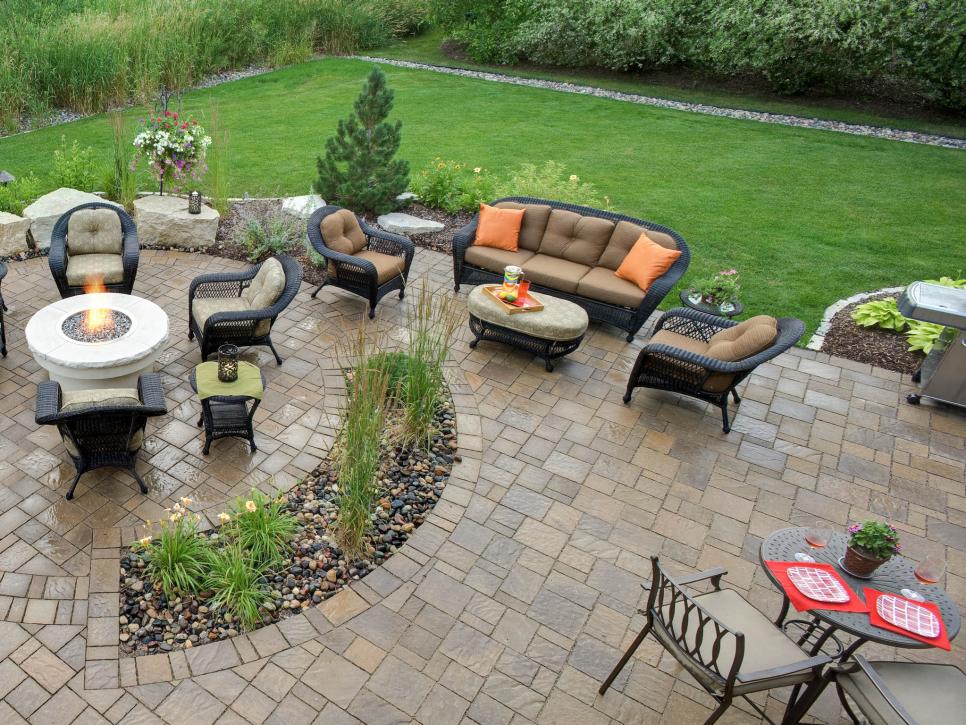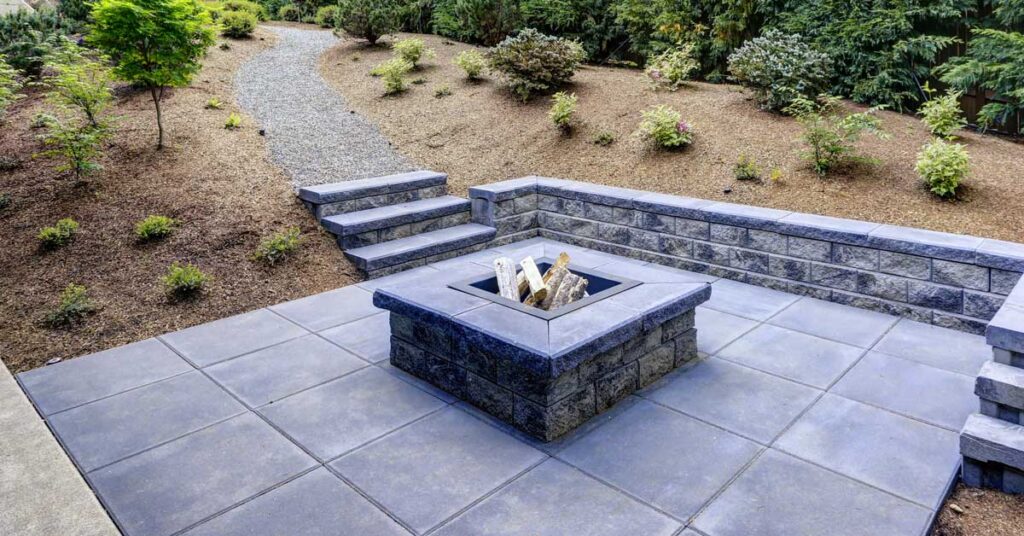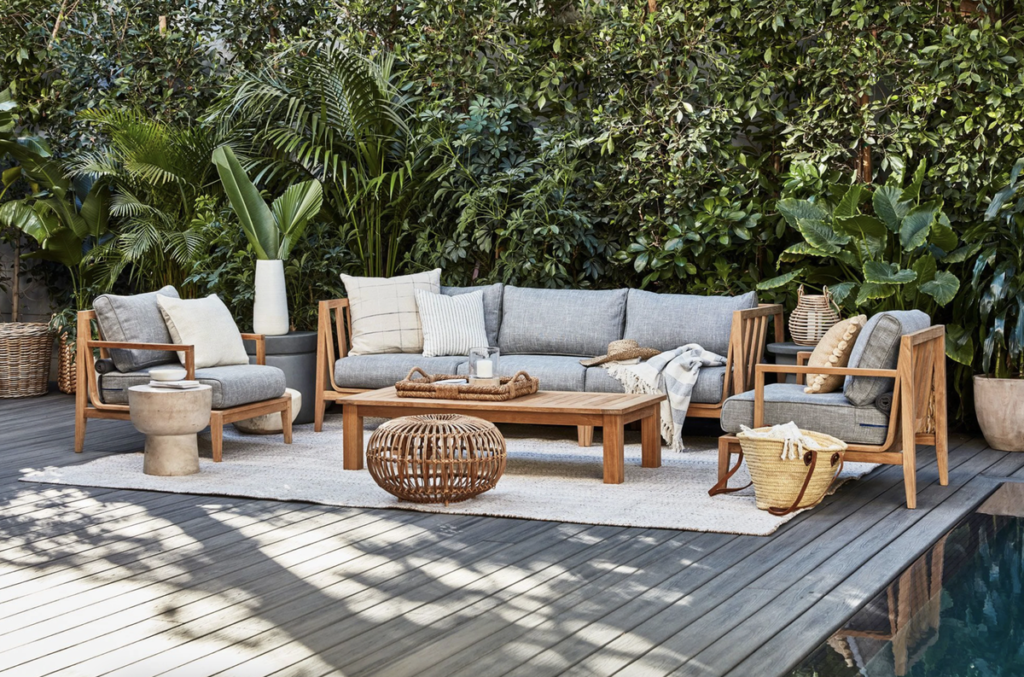What is a Paver Patio?
A paver patio is a popular outdoor living space option that can transform your backyard into an oasis of beauty. Paver patios are made using interlocking concrete, natural stone, or brick pavers that come in a wide range of colors, textures, and sizes. This allows you to create a custom design that suits your aesthetic preferences and complements your home’s architecture. In addition to creating a beautiful outdoor space, installing a paver patio comes with several benefits. Read on to learn more about the benefits of installing a paver patio.
Benefits of Installing a Paver Patio
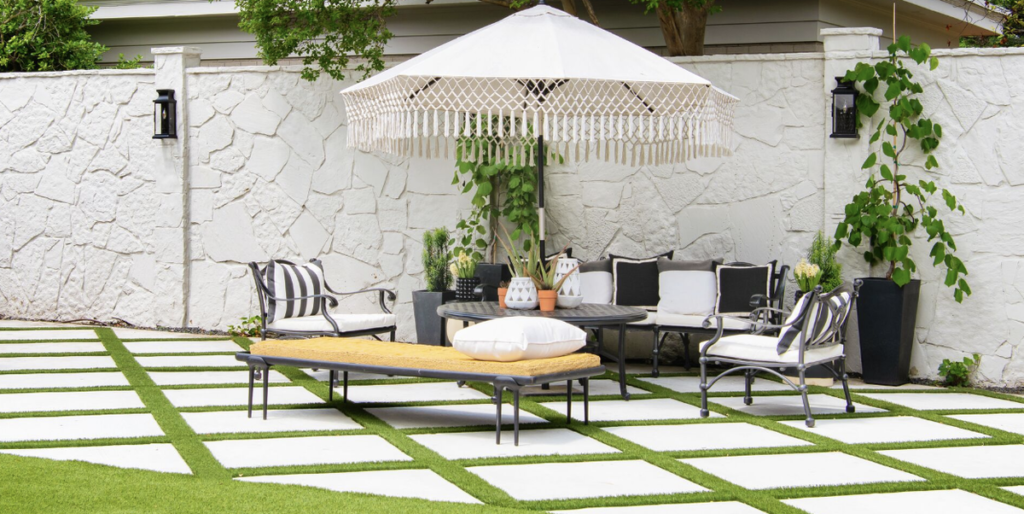
Looking for a way to increase the value of your property while simultaneously improving your outdoor living space? Consider installing a paver patio! By using interlocking concrete, natural stone, or brick pavers, a paver patio can transform your backyard into a stylish and functional oasis.
One significant advantage of pavers over other patio materials is their durability. Pavers are engineered to withstand the elements and heavy foot traffic, making them a long-lasting investment for your property. Plus, the low maintenance requirements of paver patios mean you can enjoy your outdoor space without the hassle of constant upkeep.
With a wide range of colors, textures, and sizes available, pavers also offer limitless customization options. This allows you to create a one-of-a-kind design that fits your personal style and complements your home’s architecture seamlessly.
Another benefit of paver patios is their ability to create a seamless transition between your indoor and outdoor living spaces. By installing a paver patio, you can create a new functional area to entertain, relax, cook, and eat in the fresh air all while increasing the livable space of your home.
In conclusion, installing a paver patio brings numerous advantages such as increasing the value of your property, improving your outdoor living space, providing durability, low maintenance, and customization options. If you’re considering an outdoor project that can completely transform your home and lifestyle, a paver patio is definitely worth the investment. Contact a reliable paver installation company for a consultation today!
Cost Factors
When it comes to installing a paver patio, several factors can affect the overall cost of the project. The size of the patio and the type of paver material used will both play a significant role in determining the final cost. Additionally, labor costs and rates, as well as any extra expenses for gas lines and proper drainage, should also be taken into account. To give you an idea of what to expect, we’ve researched the average cost of a 12×12 paver patio, including all the additional costs, so you can plan accordingly.
Size of the Patio
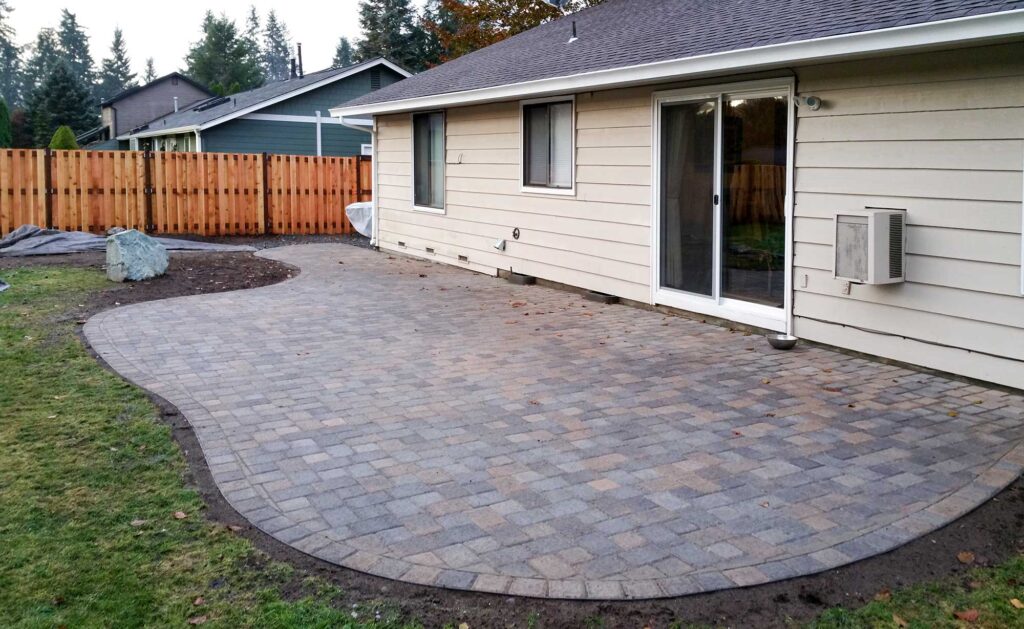
Determining the appropriate size for your paver patio is essential to ensure that it suits your outdoor living space needs. When discussing the size of your patio project, it’s vital to factor in its intended use and any existing structures or features. The square footage available and the shape of the outdoor area are also critical considerations to make.
To determine the size of your paver patio, begin by measuring the available area for your project. Keep in mind any irregularities or curves in the design that may affect the square footage required. Additionally, it would be best to consider how your patio will be used and any furniture or outdoor appliances that will be placed on it. Make sure there is enough space for movement and comfortable use, whether you’re creating a rectangular patio or a curved design.
A well-designed patio can add value to your home and create an inviting outdoor space for entertaining friends and family. Careful planning and consideration of the patio’s size and design are essential to ensure that it meets your needs and enhances your outdoor living space.
Type of Paver Material
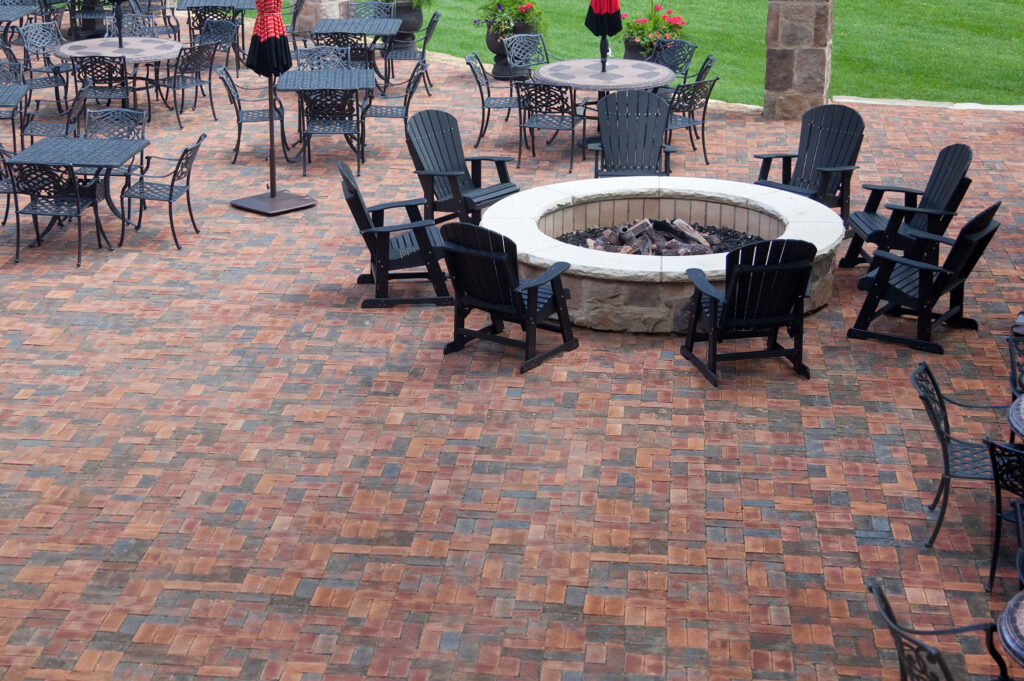
One of the most important decisions homeowners face when planning a paver patio project is choosing the right type of material. There are several different types of paver materials to choose from, including concrete, natural stone, and brick pavers. Each type of material has unique characteristics that make it better suited to certain needs and preferences.
Concrete pavers are a popular option for many homeowners due to their durability, affordability, and wide variety of shapes and colors. Concrete pavers can be made to resemble natural stone or brick, and they are easy to install. However, concrete pavers may crack over time, and they can be prone to stains and fading.
Natural stone pavers are a high-end option that offers a natural and timeless look to any patio project. Natural stone is exceptionally durable and is available in a wide range of colors and textures that offer design versatility. It’s also a more expensive option compared to concrete pavers due to its premium quality. Additionally, natural stone requires more maintenance than other paver materials as it may need to be sealed annually to maintain its color and minimize the effects of wear and tear.
Brick pavers have been used for patios for centuries and offer a classic appearance that blends well with any outdoor living space. Brick pavers are long-lasting and can withstand intense weather conditions. They’re also available in many colors and patterns, but their color can fade over time and some may find them slippery if not installed with a proper drainage system.
When considering which type of paver material to choose for your patio project, it’s essential to consider your budget, design preferences, and maintenance requirements. While natural stone may be the most visually stunning of all the types of pavers, it may also be the most expensive and high maintenance.
On the other hand, concrete pavers may be more affordable and easier to maintain, but they might not offer the same level of aesthetic appeal and longevity as natural stone pavers or brick pavers. Ultimately, it’s important to weigh the pros and cons of each material and choose the option that best meets your needs and preferences.
Labor Costs and Rates
Labor costs and rates are an essential consideration when planning a 12×12 paver patio project. The amount you’ll need to pay for labor will depend on several factors, such as the level of difficulty of the project, custom or curved designs, and the need for proper drainage.
The average labor rates for a paver patio can range from $6 to $10 per square foot, with some companies charging by the linear foot or charging a flat fee for the entire patio project. However, it’s important to note that labor rates can vary significantly between in-demand paver installation companies or experienced contractors.
The complexity of the patio project is one of the most significant factors that can impact labor costs. Custom designs or intricate patterns may require more time and effort from the contractors, which can result in higher labor fees. Likewise, a curved design or the requirement for proper drainage may increase the labor costs associated with the project.
It’s essential to research several paver installation companies and compare their labor rates before choosing one. Make sure to consider their experience, availability, and reviews from previous clients to ensure quality workmanship.
In addition to labor rates, there may be additional labor costs associated with your paver patio project. For example, if gas lines need to be installed for an outdoor kitchen or fire feature, this will incur extra labor fees.
Overall, it’s important to budget for labor costs and rates when planning your 12×12 paver patio project. By researching different paver installation companies and understanding factors that can impact labor costs, you can make a more informed decision.
Additional Costs for Gas Lines and Proper Drainage
When planning a paver patio project, it’s important to consider the additional costs associated with installing gas lines and proper drainage. Gas lines may be required for outdoor fire pits or kitchens, providing fuel for heat and cooking. However, this may entail an extra expense in the form of labor costs, as well as materials.
The cost of installing gas lines can vary depending on the complexity of the project and the distance from the gas source. The farther the gas source is from the outdoor living area, the more extensive the installation process will be, which could translate to higher labor fees. Moreover, the gas lines must be installed carefully and in compliance with local codes, which adds to the overall cost of the project.
In addition, proper drainage is crucial to protect your paver patio against water damage. If your patio is not on a flat surface or if it slopes towards your house, rainwater may accumulate and cause harm to your home’s foundation. Proper drainage involves excavation and the installation of additional materials such as pipes and gravel, which can add to the overall cost of the project.
Budgeting for these additional costs is essential when planning your paver patio project. Ensure that you factor in these costs so that you don’t end up with a surprising bill at the end of the project. You may want to consult with a professional paver installation company to get a more accurate estimate of the additional costs associated with gas line installation and proper drainage. By doing so, you can ensure that your paver patio project goes smoothly and that you stay within your budget.
Average Cost for a 12×12 Paver Patio
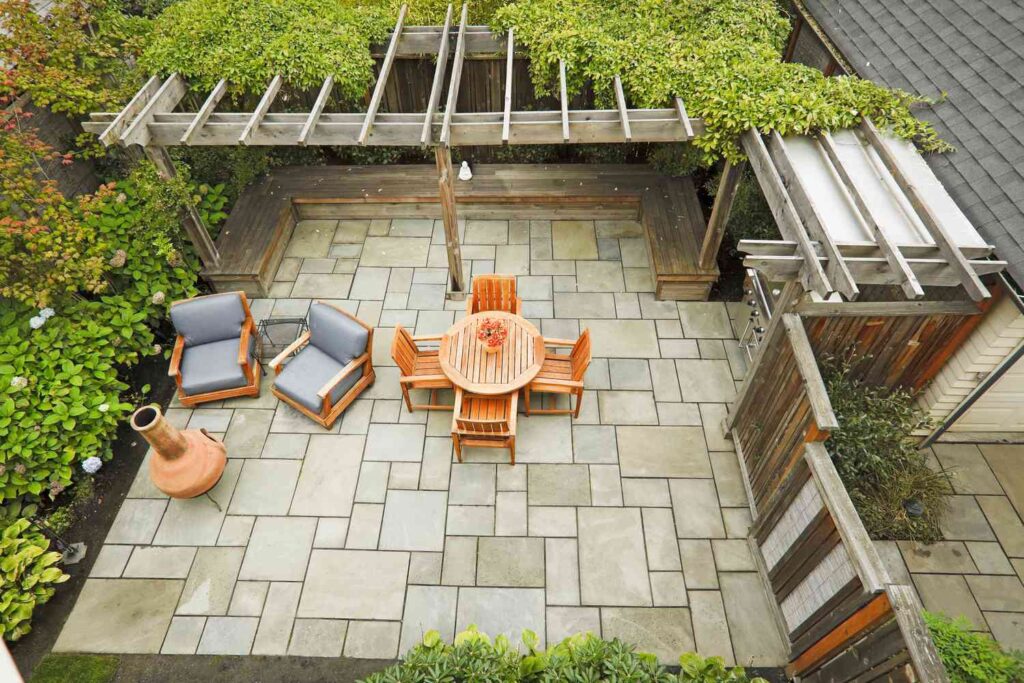
If you’re considering installing a 12×12 paver patio, it’s important to have an idea of the average cost of installation. The total cost of a 12×12 paver patio can vary depending on several factors, including the type of paver material, labor rates, and additional costs for gas lines and proper drainage.
On average, a 12×12 paver patio ranges between $1,200 to $4,000 for the cost of materials and installation. However, the final cost can be influenced by several different factors.
The type of paver material you choose can impact the overall cost of the installation. For example, natural stone pavers tend to be more expensive than concrete pavers or brick pavers. Additionally, more expensive options such as permeable pavers or flagstone pavers will add to the cost of the project.
Labor rates for installation can also significantly impact the cost of a 12×12 paver patio. Some contractors may charge a higher rate for installation if the project is complex or requires a lot of attention to detail. Flat surface, rectangular patios are the easiest to install, and therefore may cost less to install compared to curved designs or custom designs.
Finally, additional costs for gas lines and proper drainage can run up the total expense of the project. Depending on the location of the patio and distance from the gas source, gas line installation may be an extra expense. Similarly, if the outdoor living space doesn’t have proper drainage, additional materials such as pipes and gravel will need to be installed to prevent water damage.
Understanding the costs involved in installing a 12×12 paver patio can help you budget for your project and ensure that you stay within your means. When deciding on the type of paver material to use, examining the labor rates of different contractors, and scheduling for additional expenses, you can help minimize your overall cost. By doing so, you can turn your outdoor project into a reality without breaking the bank.
Popular Materials for Paver Patios
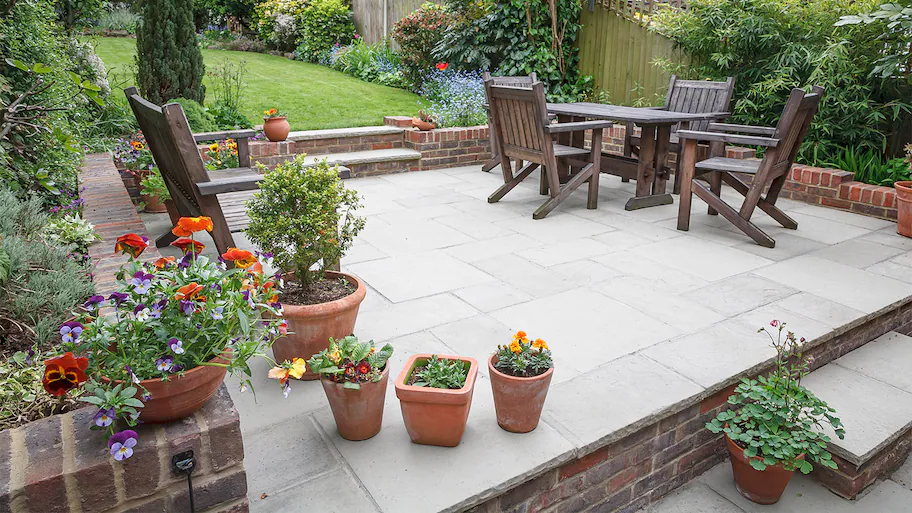
When it comes to choosing materials for a paver patio, there are many options available. Concrete pavers, natural stone pavers, and brick pavers are among the most popular options. Concrete pavers are known for their durability and wide variety of colors, patterns, and sizes.
Natural stone pavers give a more natural and elegant look to the patio and are available in different types such as slate, bluestone, and sandstone. Brick pavers provide a classic and timeless look that complements many home styles and come in different colors and shapes. Each of these paver materials has its unique advantages, so it’s essential to weigh your options before deciding which is best suited for your patio project.
Concrete Pavers
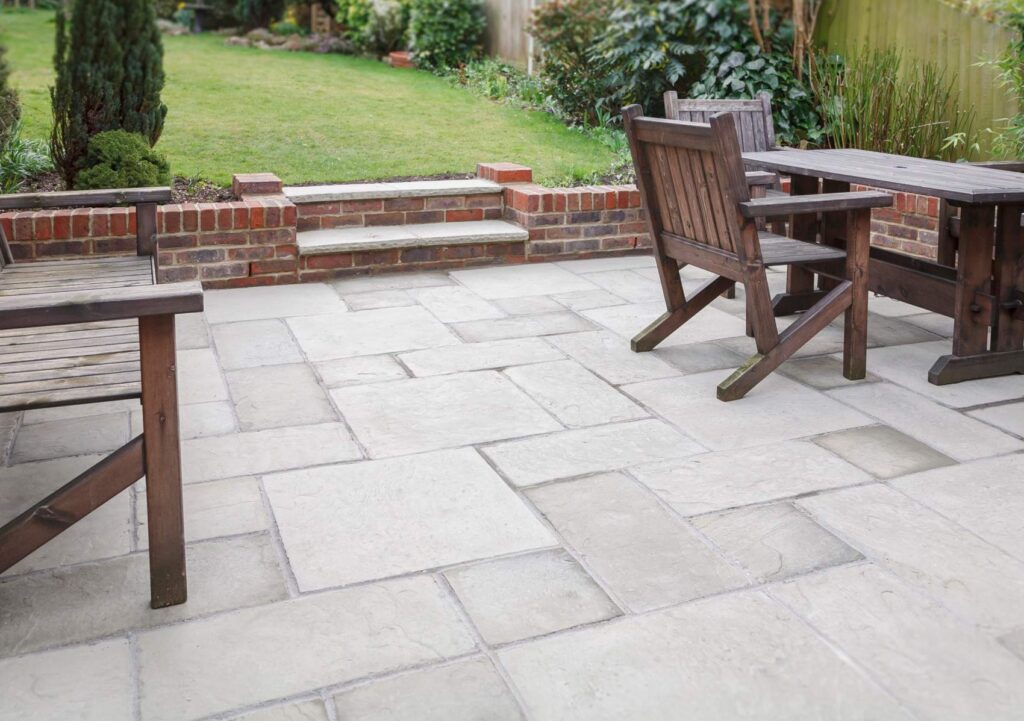
Concrete pavers are a popular material option for building a paver patio. They are a cost-effective and durable choice, making them a go-to option for many outdoor living space projects. Concrete pavers are made by pouring a mixture of cement, sand, and water into molds, then cured to create a solid surface that can withstand heavy foot traffic and various weather conditions.
One of the main benefits of using concrete pavers is that they require low maintenance. They do not need to be sealed like natural stone pavers and can be easily cleaned with soap and water. Unlike traditional poured concrete patios, concrete pavers are much simpler to repair if they become damaged due to their modular design.
Another benefit of using concrete pavers is that they come in different sizes and shapes, which means you can choose a design or pattern that suits your taste and style. The varying sizes and shapes of concrete pavers also allow for flexibility in creating curved designs or custom shapes for your patio. Additionally, concrete pavers come in a variety of styles and finishes, ranging from rustic charm to modern sophistication, giving you plenty of options to choose from.
One of the most significant advantages of concrete pavers, however, is the range of colors available. Concrete pavers can be colored throughout the entire paver or finished with a top layer that adds color variation to the surface. This feature makes it an attractive option for those looking to create a unique and personalized patio design.
Overall, concrete pavers are a cost-effective and durable option for building your paver patio. They require little maintenance and can withstand heavy foot traffic, making them an excellent choice for those looking to create a functional yet beautiful outdoor living space.
Natural Stone Pavers
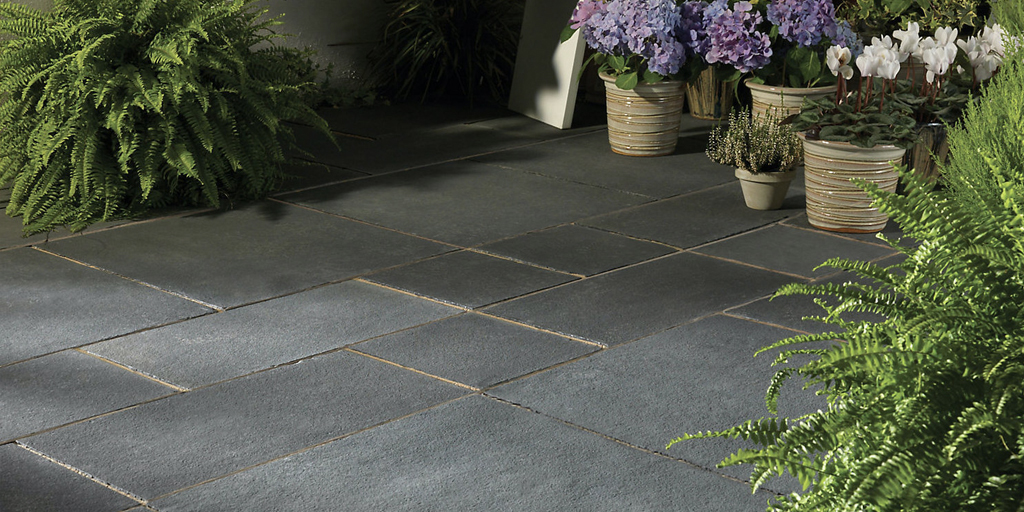
Natural stone pavers are a premium option for those looking to add a touch of elegance to their outdoor living space. They are made from natural materials like granite, limestone, or flagstone and offer unique qualities and features that can’t be replicated by man-made materials.
One of the main advantages of natural stone pavers is their durability. They can withstand high traffic areas, making them a great choice for families. In addition, natural stone pavers offer a rustic and natural look to any yard, providing an organic and earthy feel.
Natural stone pavers are available in a wide range of colors and textures, offering a versatile and flexible choice for designing your patio. The most popular types of natural stone pavers include slate, sandstone, and travertine. Slate is known for its deep colors and natural texture, while sandstone offers a softer, more muted color palette. Travertine pavers are known for their unique and varied patterns, making them a popular option for those looking for a custom look.
One thing to consider when using natural stone pavers is the price point. They tend to be more expensive than other patio materials, but their durability and long-lasting quality generally make up for their higher cost. Installing natural stone pavers may also require a bit more care and attention compared to other materials. However, once they are installed, natural stone pavers are easy to maintain and can last for decades.
Overall, natural stone pavers are an excellent option for those looking to create a unique and high-end look for their patio. With their durability, rustic look, and versatility in color and texture, they offer a timeless and elegant choice for creating your dream outdoor living space.
Brick Pavers
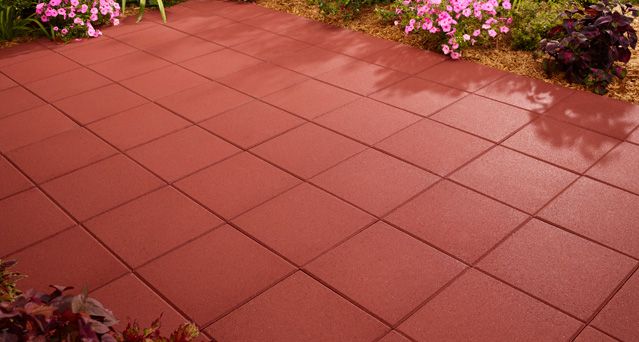
Brick pavers are a popular choice for patios due to their durability and low maintenance. They are made from clay or concrete and are able to withstand harsh weather conditions, making them ideal for outdoor use. In addition, brick pavers require minimal maintenance, making them a convenient option for homeowners.
One of the benefits of using brick pavers for your patio is the variety of color and texture options available. Whether you’re looking for a classic red brick or something more unique like a gray or tan color, there is a brick paver out there to fit your style. They also come in different textures, ranging from smooth to rough, allowing you to create a custom look for your patio.
Another advantage of brick pavers is their affordability compared to other patio materials. While natural stone pavers may be more expensive, brick pavers offer a more budget-friendly option without sacrificing durability or aesthetic appeal.
Design and pattern options are also a highlight of using brick pavers for your patio. Popular designs include herringbone, where the brick pavers are laid at a 45-degree angle, basket weave, where the pavers interlock in a crisscross pattern, and running bond, a classic design where the pavers are laid in rows. These different designs can add dimension and visual interest to your patio.
Overall, brick pavers offer a durable, low maintenance, and affordable option for designing your dream patio. With their variety of color and texture options, as well as the ability to create unique designs and patterns, brick pavers are a versatile choice for any outdoor project.
Popular Color Options for Paver Patios
When it comes to designing a patio, choosing the right color can be just as important as selecting the right material. Luckily, paver patios offer a wide range of color options to match any aesthetic. Concrete pavers come in a variety of colors including neutral tones like gray and beige, as well as bolder options like red and blue.
Natural stone pavers offer a range of earthy tones like brown and tan, while brick pavers provide classic options like red and warm, earthy hues like brown and orange. With so many color options available for paver patios, you’re sure to find a look that fits your personal style and complements your outdoor living space.
Variety of Colors Available with Concrete, Natural Stone, and Brick Pavers
When it comes to selecting the right color for your paver patio, there’s a vast array of options to choose from. Each type of paver offers a different selection of shades and hues that can complement your outdoor space. When discussing the range of colors available for pavers, it’s essential to note that there are a wide variety of options to choose from.
Concrete pavers are a popular choice and come in a range of neutral tones, including shades of gray, beige, and brown. You can also opt for more vibrant colors like red and even blue. With such an extensive range of colors available, you can effortlessly find a shade that matches your outdoor living space’s aesthetics.
Natural stone pavers provide an earthier look and come in various colors like gray, brown, tan, and even blue. These natural colors offer a more subtle look that blends well with the surrounding landscape.
If you’re seeking a classic and timeless look, brick pavers are the way to go. The traditional choice of brick pavers offers colors like red, warm earthy tones like brown and orange, and even a neutral tan. These colors add to the elegance and style of your patio space.
Additionally, pavers may be available in custom colors and patterns, which gives you the freedom to add a unique touch to your patio. Whether it’s a bold and vibrant pop of color or a subtle pattern, customizing your pavers can make a significant difference in the overall aesthetic of your patio.
In conclusion, with the variety of colors available for concrete, natural stone, and brick pavers, you can quickly achieve the look you desire for your patio. With custom color options also available, the possibilities are endless.
Design Considerations for a Paver Patio
When considering design options for a paver patio, it’s imperative to contemplate a few factors. Firstly, determine the patio’s shape and size, taking into account any unique features you want to incorporate, such as curves or custom designs. The shape and size of your patio will have a significant impact on the finished look and feel of your outdoor space.
Next, ensure that proper drainage is included in your design. This is crucial as water pooling on your patio can lead to damage and costly repairs in the future. Additionally, ensure that gas lines are installed with care to avoid any unnecessary accidents or damage to your patio.
To ensure that your outdoor living space is level, it’s important to consider using additional materials such as sand or gravel to create a flat surface for the pavers. This will prevent any unevenness, which could cause tripping hazards or lead to water damage.
There are different types of paver materials available that can be used to enhance the overall aesthetic of your patio. Concrete pavers are a versatile and durable option with a wide range of color and pattern choices. Natural stone pavers can also be used to create a unique and earthy aesthetic. Brick pavers, on the other hand, offer a classic and timeless design to complement any style.
Permeable pavers are another great option to consider for your patio design. These eco-friendly pavers allow rainwater to pass through the surface, preventing water buildup and reducing runoff. This is an excellent option for those who want to promote sustainability and reduce their environmental impact.
In conclusion, considering proper drainage, gas line installation, and additional materials for a flat surface is crucial in the design process of a paver patio. With the array of pavers available, including permeable options, finding a unique design that elevates the overall aesthetic of your outdoor living space is within reach.

